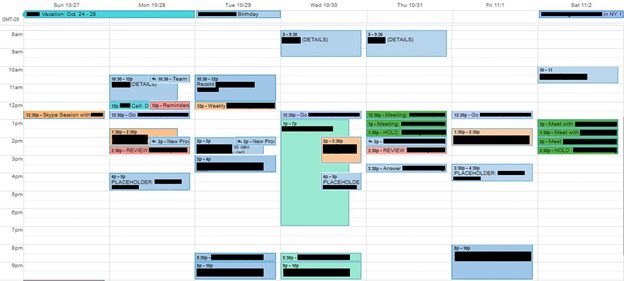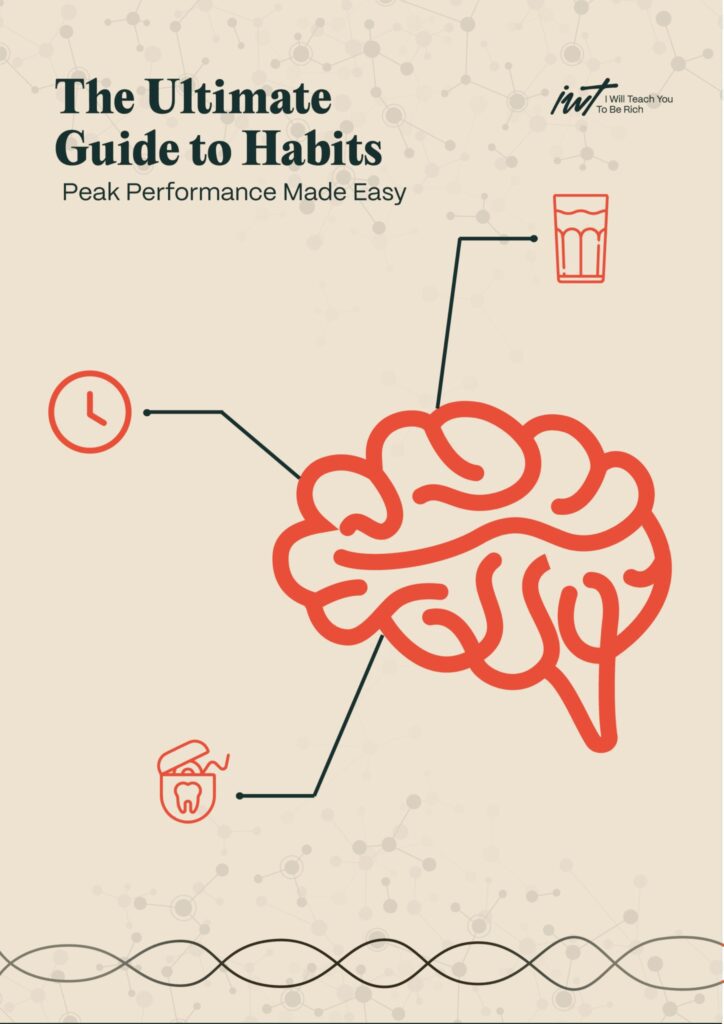How to Be More Productive (3 easy steps for when you feel lazy)


How many times have you told yourself you’ll start working out five times per week, eat less processed foods, or commit to finding a side hustle, only not to follow through when you get tired?
I’ve worked with my mentor, BJ Fogg, Stanford professor and author of the bestselling book, Tiny Habits, where we developed three easy steps you can follow to be more productive, even when you don’t feel like it.
Step 1: Be Willing to Fail

Successful people aren’t luckier than others. But they do try more things, and they’re willing to fail.
For example, my good friend Tim Ferriss was rejected 26 times before a publisher finally accepted his idea for The 4-Hour Workweek (which later became a New York Times and Wall Street Journal best-seller).
Almost anyone who’s been successful has a similar story of failure before triumph.
But the difference between average and productive people is that average people are blindsided by failure and give up when it strikes.
Productive people, on the other hand, actively seek out failure because they know success is on the other side.
BJ and I sat down and talked about how we can use failure and “motivational waves” to our advantage so when other people tire out, we can have a system to follow through.
How you can start using this right now:
- Make a list of everything you need to get to accomplish your goal
- Set up those pieces in a way that makes failure impossible
Here are a few examples of what that might look like:
BJ wanted to drink more tea. So he bought all the tea, an electric kettle to boil water, and set everything up in easy reach on his counter. Even when he felt like drinking something else, it was right there, so it was a no-brainer to brew some.
I was trying to form a gym habit. I’d get up in the morning planning to go, but after a few minutes, I decided not to. I discovered that if I put my gym clothes and my shoes next to my bed, I would put them on first thing and instead decide I might as well just go.
Chandler Bolt of The Productive Person wrote 365 thank you notes last year by pre-stamping and adding address labels to batches of 50 cards. By keeping the cards close by, he was able to make it easy to write and send the cards with or without motivation.
Sometimes, you might need to place restrictions in order to accomplish your goal. I spoke to Elizabeth and Jonathan in a recent episode of my podcast, and found that they were overspending on subscriptions despite already being in debt:
[00:19:40] Elizabeth: Like I said, we’ve tried to get out of debt many times, and we never get out of debt ever. That’s why it keeps accumulating. It just keeps getting worse.
[00:19:52] Ramit: Eating out. What else?
[00:19:54] Elizabeth: I would buy a lot of movies online.
[00:19:59] Ramit: What?
[00:20:00] Elizabeth: Like at $5 a pop, digital movies.
[00:20:04] Ramit: What?
[00:20:05] Elizabeth: That was something else I like to buy.
[00:20:06] Ramit: Wait, hold on. You have $185 a month in subscriptions. I presume that’s like Disney plus, Netflix, all that stuff, right?
[00:20:13] Elizabeth: Yes.
[00:20:13] Jonathan: Mm-hmm.
[00:20:13] Ramit: So you’re buying on top of those.
[00:20:15] Elizabeth: Yes, I am. I stopped. Jon made me stop, so I did stop.
[00:20:20] Ramit: What’d you say, Jon?
[00:20:21] Jonathan: Can we really afford that? You need to stop. It all adds up.
They were spending $185 monthly on entertainment subscriptions alone when they really should have been allocating money to pay off their debt.
As well as canceling their subscriptions Elizabeth and Jon can add payment blocks to their cards to prevent them being set up again, which helps to prevent relapses. It can be easy to forget what subscriptions you have, but there are apps like Chargebee that monitor them for you. By using these apps you can be sure nothing slips through the cracks and you wind up paying for something you don’t need.
In this case setting up the pieces so failure is impossible might be stopping these subscriptions, but also placing payment blocks on cards to prevent setting them up again. That makes it much easier to avoid a relapse into making payments for things you don’t need.
Step 2: Focus on the Fundamentals and Forget the Hacks
Do you know what most productivity “experts” hope you’ll never find out?
The tips they spout and the apps they sell are total BS. The experts themselves don’t even use them!
When was the last time you downloaded an app that you were sure was going to make you more productive, used it for less than a day, and then forgot about it?
Was it this month? This week? This morning?
What about the last time you killed the afternoon’s productivity reading articles like “100 Successful People Teach You How to Be More Productive” instead of actually getting things done?
Honestly, are you doing that right now?
Consider this: you’re playing a basketball game against LeBron James. You have the best shoes, the most expensive pair of athletics shorts, a fancy headband, and the best jersey in the world. And he has no shoes, ripped shorts, and a dress shirt. Who would win?
It sounds ridiculous, but we play a similar game against productivity every day.
The tools don’t matter as much as we think.
Novices LOVE to focus on productivity hacks, apps, and tools. It’s easy — and frankly, more fun — to play with shiny new things than to do what works.
Usually, the fundamentals — things like a calendar, pen, and paper — work as well as (if not better than) some app. Take a look at a sample of my calendar system.

See how it’s not a super advanced set of apps? I purposely make it easy on myself so I can follow through and easily update things.
EXECUTION is more important than the tactic itself.
How you can start benefiting from this right now:
- Decide ahead of time and map out your schedule for the week either, on paper or in a simple calendar system
- Set an alert in your calendar or on your phone to review this every week. Keep thinking ahead, and you’ll never be caught off guard or pressed for time
- Make sure you’re checking this calendar at the start of each day, and actually stick to what you said you’ll do
Step 3: Develop Laser-Guided Focus
Something else BJ and I have spoken about is “competing motivations” — sometimes even our best efforts to be productive are thwarted because something else comes along.
Sometimes these are external distractions: an emergency comes up, we have family demands, and work gets busy.
But just as often, we cannibalize one goal by shifting focus to another. The result? We don’t make much progress on either.
Developing focus and being able to put some ideas (temporarily) on hold is a skill that near-guarantees progress on what matters. Let me show you what I mean.
One of my close friends, Noah Kagan, a former employee of Mint, Facebook, and the founder of AppSumo, showed me the power of having laser-guided focus — he was able to start not one, but two multimillion-dollar businesses that still see year-on-year growth.
He does this by setting one big goal at a time.
Here’s how you can do the same right now:
- Pick your number one goal. Is it earning more money? Starting a business? Finding your Dream Job?
- Grab a pen and paper and write it down. Really, do this now. This isn’t a silly “thought exercise.” We’re doing this to commit ourselves to one course of action and follow through
- Keep this paper to hand as a constant reminder of what you’re working towards. This simple act alone will keep you from getting constantly distracted by the things in your periphery
The Ultimate Guide to Habits: Peak performance made easy
When a successful person says they’re going to do something, whether quitting smoking, writing a book, or losing weight, you know they’ll get it done. Can you say the same for yourself?
Maybe not. Perhaps you start something, hit a hurdle, give up, and come back to it a year later to do the exact same thing.
If you really want to get things done you need a system that helps you stick with the things you start, even when you’re feeling lazy. That’s exactly what I’ve developed: a system that’s helped me write a New York Times best-selling book, build a multimillion-dollar business, put on 40 pounds of muscle, and live a Rich Life.
What it really did was help me filter through millions of possibilities to focus on the biggest goals in my life.

Here are a few things you’ll learn in the Ultimate Guide to Habits:
- How to set goals in the ‘right’ way, instead of just thinking of something you want and ‘trying’ to make it happen.
- How to make any habit last forever, and why relying on motivation alone is a loser’s game: that includes what to do when you fall off track.
- How to use these changes in your behavior to live a Rich Life in a way that’s sustainable in the long term.
If you like this post, you'd love my Ultimate Guide To Habits below.
It’s one of the best things I’ve published (and 100% free), just tell me where to send it: